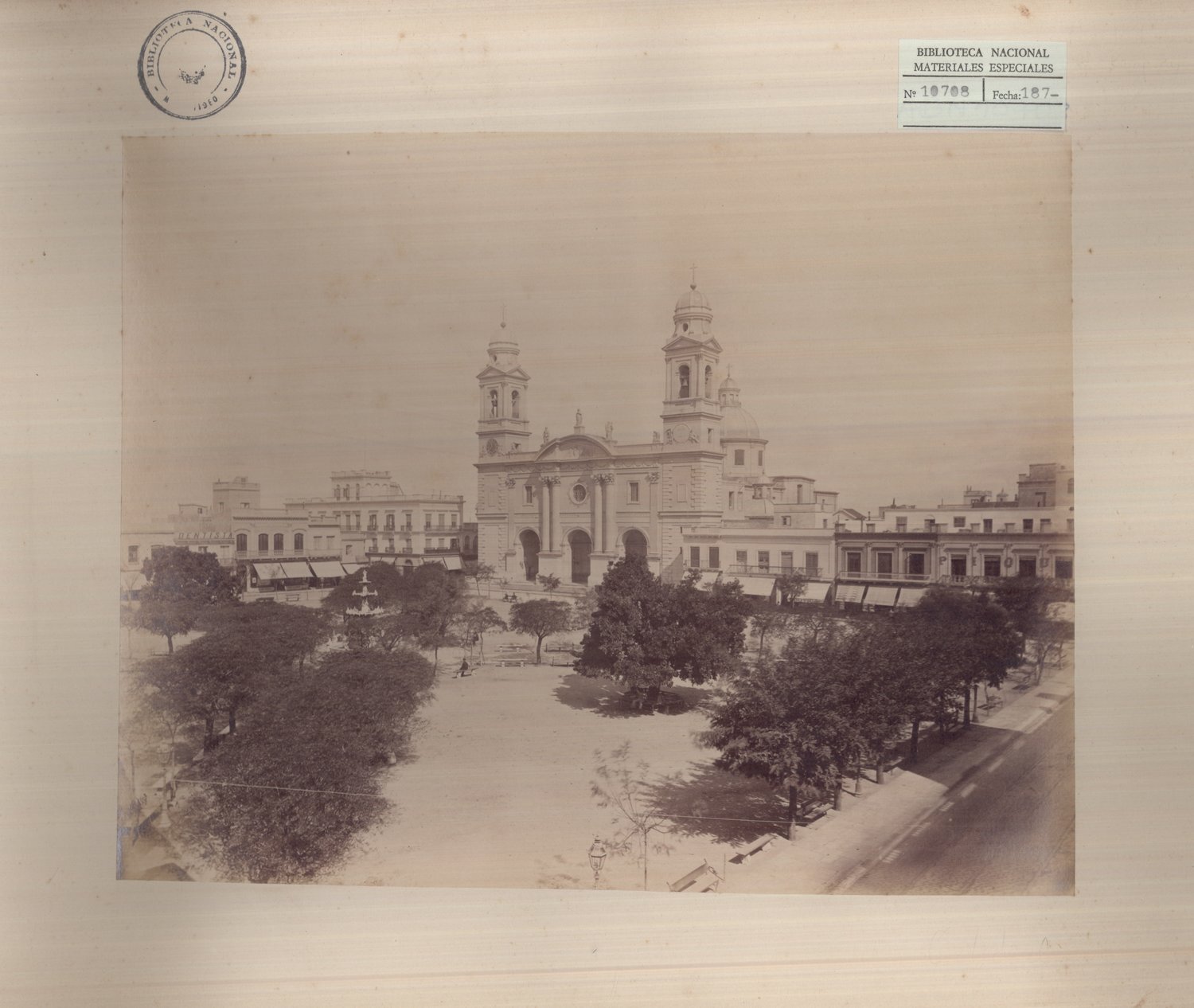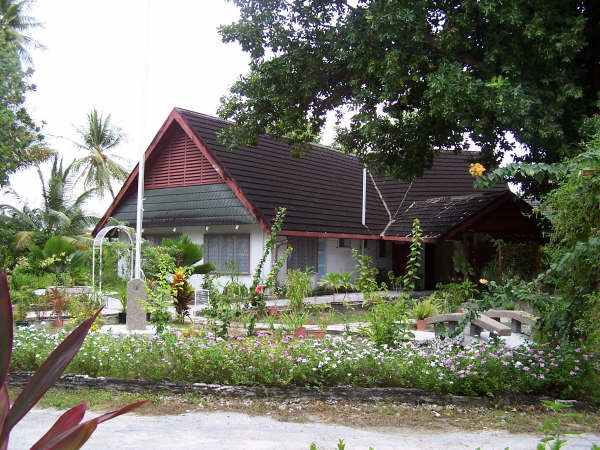|
Montevideo Cabildo
The Montevideo Cabildo (Spanish language: Cabildo de Montevideo) is the public building in Montevideo that was used as the government house during the colonial times of the Viceroyalty of the River Plate. Today the building is used as a museum A museum ( ; plural museums or, rarely, musea) is a building or institution that cares for and displays a collection of artifacts and other objects of artistic, cultural, historical, or scientific importance. Many public museums make thes ... and houses the Historical Archive of the city. It is located on Constitution Square, in Ciudad Vieja. Books * External links Museo y Archivo Histórico Municipal Cabildo - Intendencia Municipal de Montevideo Cabildos Neoclassical architecture in Uruguay Buildings and structures in Montevideo Viceroyalty of the Río de la Plata Ciudad Vieja, Montevideo Museums in Montevideo History museums in Uruguay {{Montevideo-stub ... [...More Info...] [...Related Items...] OR: [Wikipedia] [Google] [Baidu] |
Museum
A museum ( ; plural museums or, rarely, musea) is a building or institution that cares for and displays a collection of artifacts and other objects of artistic, cultural, historical, or scientific importance. Many public museums make these items available for public viewing through exhibits that may be permanent or temporary. The largest museums are located in major cities throughout the world, while thousands of local museums exist in smaller cities, towns, and rural areas. Museums have varying aims, ranging from the conservation and documentation of their collection, serving researchers and specialists, to catering to the general public. The goal of serving researchers is not only scientific, but intended to serve the general public. There are many types of museums, including art museums, natural history museums, science museums, war museums, and children's museums. According to the International Council of Museums (ICOM), there are more than 55,000 museums in 202 countrie ... [...More Info...] [...Related Items...] OR: [Wikipedia] [Google] [Baidu] |
Constitution Square (Montevideo)
, also known as ''Plaza Matriz'', is the oldest city square in Montevideo, Uruguay. Located in '' barrio'' Ciudad Vieja, since 1726 was the '' plaza mayor'' of the Fortress City of San Felipe and Santiago of Montevideo, in which it was the only open public space. It is the center of the city's historic district, and is surrounded by important buildings, such as the Metropolitan Cathedral and the Cabildo. It is, therefore, one of the most important tourist sites. History Founded in 1726, two years after the founding of Montevideo, the square was a dusty plain until the end of the 18th century, when buildings were built around it. From that moment on, official events and celebrations, both civil and military, were held in the space, as well as bullfights, since a bullring was located in the square. In 1851, the square was structured in a centralized way with diagonal paths lined with trees, paved and equipped with benches and lanterns. In 1868, construction began on a steam ... [...More Info...] [...Related Items...] OR: [Wikipedia] [Google] [Baidu] |
Montevideo
Montevideo () is the Capital city, capital and List of cities in Uruguay, largest city of Uruguay. According to the 2011 census, the city proper has a population of 1,319,108 (about one-third of the country's total population) in an area of . Montevideo is situated on the southern coast of the country, on the northeastern bank of the Río de la Plata. The city was established in 1724 by a Spanish soldier, Bruno Mauricio de Zabala, as a strategic move amidst the Spanish people, Spanish-Portuguese people, Portuguese dispute over the La Plata Basin, platine region. It was also under brief British invasions of the Río de la Plata, British rule in 1807, but eventually the city was retaken by Spanish criollos who defeated the British invasions of the River Plate. Montevideo is the seat of the administrative headquarters of Mercosur and ALADI, Latin America's leading trade blocs, a position that entailed comparisons to the role of Brussels in Europe. The 2019 Mercer's report on qual ... [...More Info...] [...Related Items...] OR: [Wikipedia] [Google] [Baidu] |
Government Of Uruguay
The politics of Uruguay abide by a presidential representative democratic republic, under which the President of Uruguay is both the head of state and the head of government, as well as a multiform party system. The president exercises executive power and legislative power and is vested in the two chambers of the General Assembly of Uruguay. The Judiciary is independent from the executive and legislature. The Colorado and National parties have been locked in a power struggle, with the predominance of the Colorado party throughout most of Uruguay's history. The 2004 election, however, brought the Encuentro Progresista-Frente Amplio-Nueva Mayoría, a coalition of socialists, former Tupamaros, communists, social democrats, and Christian Democrats among others to power with majorities in both houses of parliament. A majority vote elected President Tabaré Vázquez. In 2009, the Broad Front once again won the elections with a plurality of the votes. A presidential runoff was trig ... [...More Info...] [...Related Items...] OR: [Wikipedia] [Google] [Baidu] |
Spanish Language
Spanish ( or , Castilian) is a Romance languages, Romance language of the Indo-European language family that evolved from colloquial Latin spoken on the Iberian peninsula. Today, it is a world language, global language with more than 500 million native speakers, mainly in the Americas and Spain. Spanish is the official language of List of countries where Spanish is an official language, 20 countries. It is the world's list of languages by number of native speakers, second-most spoken native language after Mandarin Chinese; the world's list of languages by total number of speakers, fourth-most spoken language overall after English language, English, Mandarin Chinese, and Hindustani language, Hindustani (Hindi-Urdu); and the world's most widely spoken Romance languages, Romance language. The largest population of native speakers is in Mexico. Spanish is part of the Iberian Romance languages, Ibero-Romance group of languages, which evolved from several dialects of Vulgar Latin in I ... [...More Info...] [...Related Items...] OR: [Wikipedia] [Google] [Baidu] |
Government House
Government House is the name of many of the official residences of governors-general, governors and lieutenant-governors in the Commonwealth and the remaining colonies of the British Empire. The name is also used in some other countries. Government houses in the Commonwealth of Nations Anguilla * Government House, Old Ta is the official residence of the governor of Anguilla. Antigua and Barbuda * Government House, St. John's is the official residence of the Governor-General of Antigua and Barbuda. Australia * Government House, Canberra, commonly known as Yarralumla, is the official residence of the Governor General of Australia. * Admiralty House, Kirribilli is the Governor General's official residence in Sydney. * Government Houses for the state Governors exist also in each state and the Northern Territory: ** Government House, Sydney in New South Wales ** Government House, Melbourne in Victoria; between 1901 and 1930 used by the Governor-General ** Government Hous ... [...More Info...] [...Related Items...] OR: [Wikipedia] [Google] [Baidu] |
Colonialism
Colonialism is a practice or policy of control by one people or power over other people or areas, often by establishing colonies and generally with the aim of economic dominance. In the process of colonisation, colonisers may impose their religion, language, economics, and other cultural practices. The foreign administrators rule the territory in pursuit of their interests, seeking to benefit from the colonised region's people and resources. It is associated with but distinct from imperialism. Though colonialism has existed since ancient times, the concept is most strongly associated with the European colonial period starting with the 15th century when some European states established colonising empires. At first, European colonising countries followed policies of mercantilism, aiming to strengthen the home-country economy, so agreements usually restricted the colony to trading only with the metropole (mother country). By the mid-19th century, the British Empire gave up me ... [...More Info...] [...Related Items...] OR: [Wikipedia] [Google] [Baidu] |
Viceroyalty Of The River Plate
A viceroyalty was an entity headed by a viceroy. It dates back to the Spanish conquest of the Americas in the sixteenth century. France *Viceroyalty of New France Portuguese Empire In the scope of the Portuguese Empire, the term "Viceroyalty of Brazil" is also occasionally used to designate the colonial State of Brazil, in the historic period while its governors had the title of "Viceroy". Some of the governors of Portuguese India were also called "Viceroy". *Viceroyalty of Brazil * Governors of Portuguese India Russian Empire *List of viceroyalties of the Russian Empire Spanish Empire The viceroyalty ( es, virreinato) was a local, political, social, and administrative institution, created by the Spanish monarchy in the sixteenth century, for ruling its overseas territories. The administration over the vast territories of the Spanish Empire was carried out by viceroys, who became governors of an area, which was considered not as a colony but as a province of the empire, with ... [...More Info...] [...Related Items...] OR: [Wikipedia] [Google] [Baidu] |
Museum
A museum ( ; plural museums or, rarely, musea) is a building or institution that cares for and displays a collection of artifacts and other objects of artistic, cultural, historical, or scientific importance. Many public museums make these items available for public viewing through exhibits that may be permanent or temporary. The largest museums are located in major cities throughout the world, while thousands of local museums exist in smaller cities, towns, and rural areas. Museums have varying aims, ranging from the conservation and documentation of their collection, serving researchers and specialists, to catering to the general public. The goal of serving researchers is not only scientific, but intended to serve the general public. There are many types of museums, including art museums, natural history museums, science museums, war museums, and children's museums. According to the International Council of Museums (ICOM), there are more than 55,000 museums in 202 countrie ... [...More Info...] [...Related Items...] OR: [Wikipedia] [Google] [Baidu] |
Ciudad Vieja, Montevideo
Ciudad Vieja (, ''Old City'') is a historic neighbourhood in Montevideo, the capital of Uruguay. Located in a peninsula at the entrance of the natural port of Montevideo it was founded in 1724 as a walled city by the Spanish Empire, after the independence of Uruguay the city rapidly grew outwards and the Ciudad Vieja remained as one of the central neighbourhoods, nowadays it serves as one of the main office districts of Montevideo, housing multiple banks and institutions, but also as one of main tourist attractions in Uruguay due to its historical significance and classical architecture. History Until 1829 it was surrounded by a wall that protected it from possible invasions. After the wall was torn down, the only part of it that was preserved was the main gateway to the Citadel, which remains to this day as an emblem of Montevideo. Some street names recall the presence of the wall, like Ciudadela (''citadel'') or Brecha (''breach''), which owns its name to the breach in th ... [...More Info...] [...Related Items...] OR: [Wikipedia] [Google] [Baidu] |
Cabildos
Cabildo can refer to: * Cabildo (council), a former Spanish municipal administrative unit governed by a council * Cabildo abierto, or open cabildo, a Latin American political action for convening citizens to make important decisions * Cabildo (Cuba), African ethnic associations in colonial Cuba * ''Cabildo'' (magazine), an Argentine nationalist Catholic magazine * ''Cabildo'' (opera), a 1932 one-act opera by Amy Beach * The Cabildo, a historic building in New Orleans, Louisiana * Cabildo insular, island governments in the Canary Islands * Buenos Aires Cabildo, a historical building in Buenos Aires, government house during colonial times * Córdoba Cabildo, a historical building in Córdoba, government house during colonial times * Cabildo, Chile Cabildo is a Chilean city and commune located in the Petorca Province, Valparaíso Region. The commune spans an area of . Demographics According to data from the 2002 Census of Population and Housing, Cabildo had 18,916 inhabitants; of ... [...More Info...] [...Related Items...] OR: [Wikipedia] [Google] [Baidu] |


.jpg)


